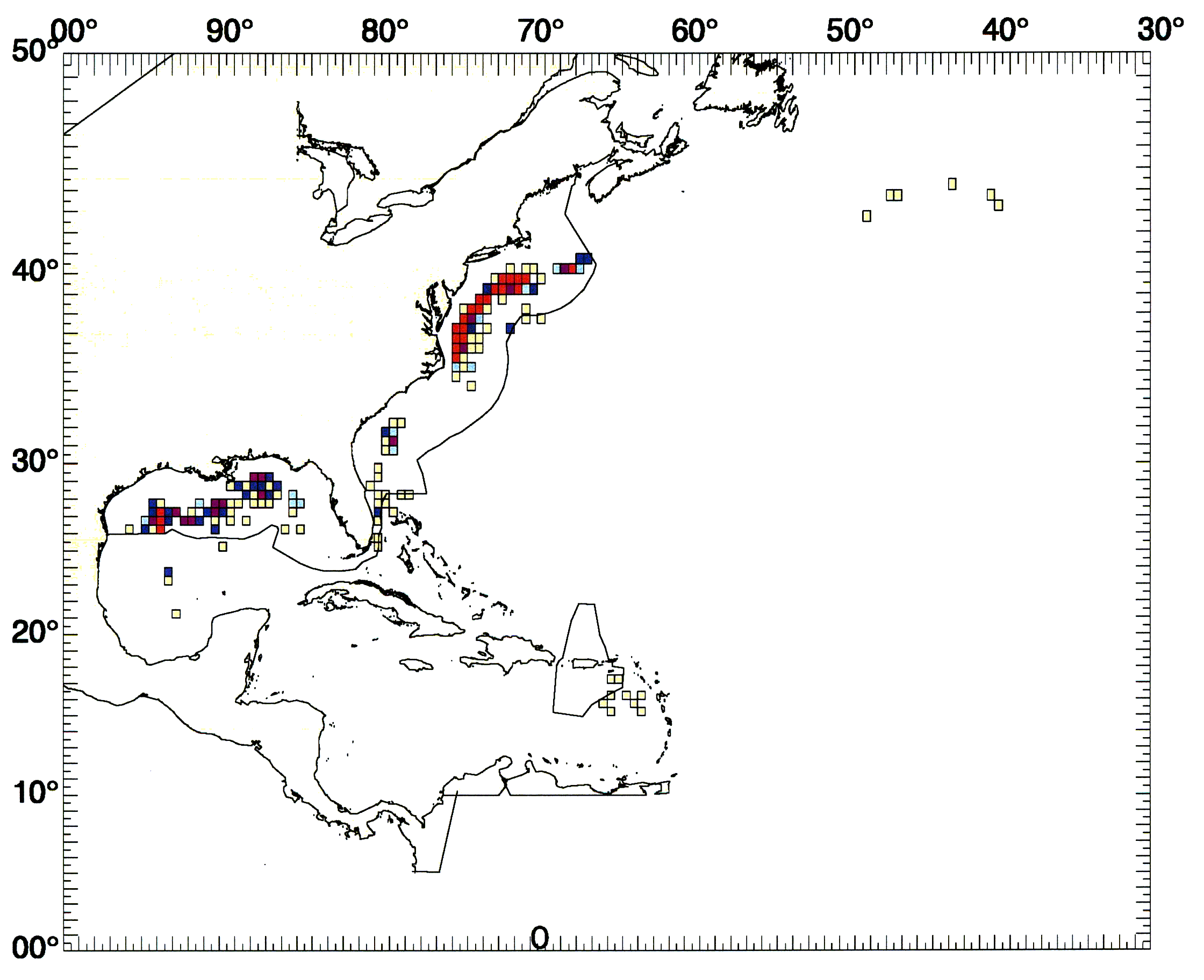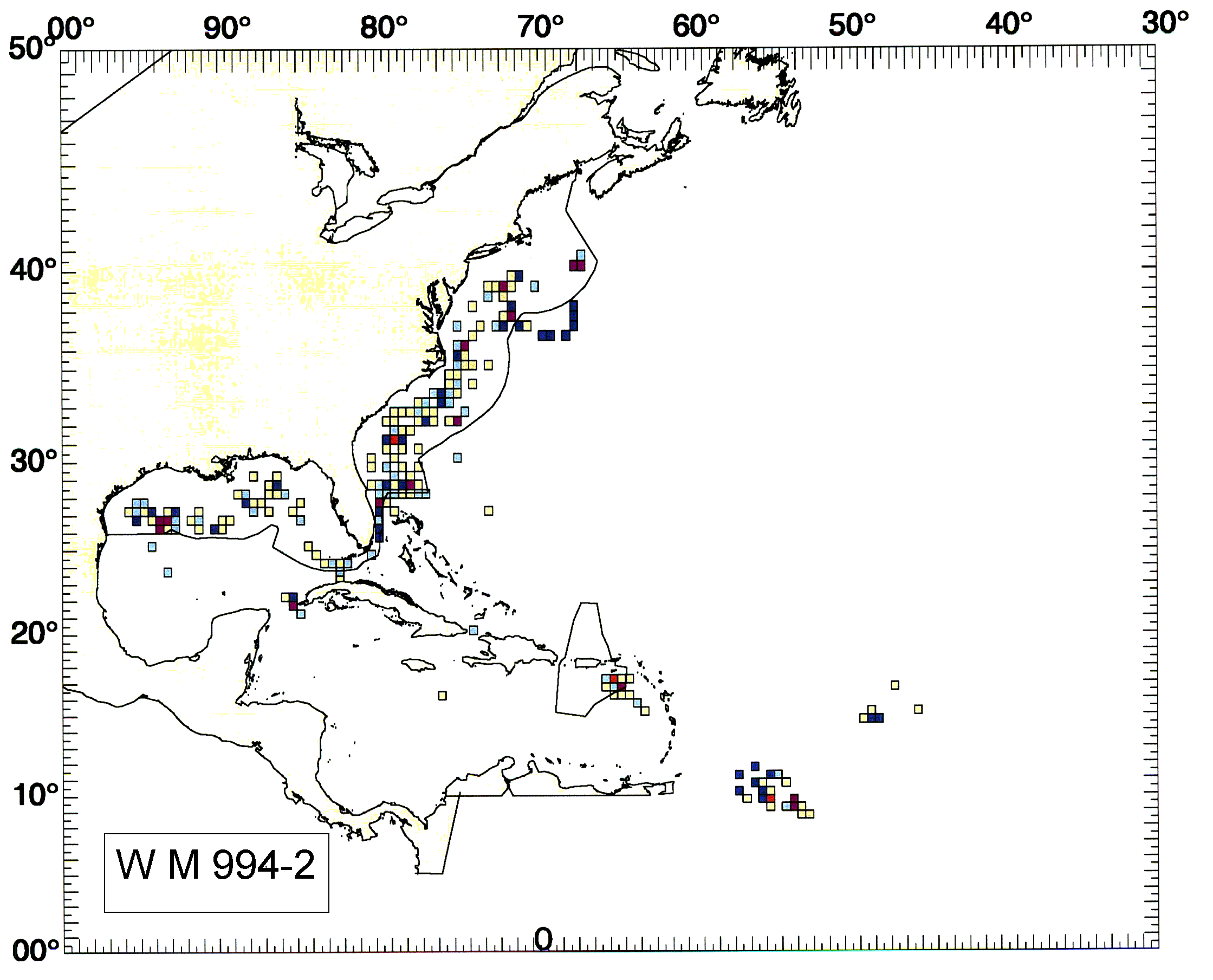
Recommended "Hot Spot" Closures to Protect White Marlin from Longlines
Pictured below are plots of the catch record of white marlin per 1,000 Hooks by U.S. longline vessels during two quarters (Apr - Jun and Jul - Sept) per 30' Squares during 1994. (Color Codes: Red = >16, Magenta = 8-16, Dark Blue = 4-8, Pale Blue = 2-4, and Yellow = 1-2.) (Source - P. Mace, NMFS)
Summer through Fall (3rd Quarter) Feeding Area "Hot Spots"

As depicted above, the Mid-Atlantic feeding area "hot spot" extends from just below Cape Hatteras to the eastern tip of Georges Bank. It is positioned between the 100 and 1,000 fathom depth contours and it is occupied by white marlin from early June through October. The Gulf of Mexico "hot spot" extends from the area near the Flower Garden Bank off Texas to the area of the de Soto Canyon off Pensacola, Florida. It too encompasses the water between the 100 and 1,000 fathom depth contours and is occupied by white marlin from early June through October. These "hot spots" and a 5-mile buffer around them should be closed to longlines from May 15 through November 15.
Late Spring (2nd Quarter) Spawning Area Hot Spots

Shown above is a plot of longline catches for adult white marlin during the second quarter (April through June) of 1994. Based on gonad examinations, we know that spawning activity peaks during May. This 3-month plot therefore shows where adult white marlin were caught not only when they were occupying their spawning sites in the Caribbean, but also where they were caught during the two months immediately preceding spawning and immediately following spawning, as they moved to and from their summer-fall feeding grounds which are depicted above. Apparently, white marlin spawn in the gaps between the major islands of the Caribbean (such as the Yucatan Channel between Mexico and Cuba, between Cuba and Haiti, and between the Dominican Republic and Puerto Rico where marlin larvae have recently been found) and two large areas east of the Caribbean chain. They also apparently spawn in the area of the Saba Bank SSE of St. Croix (as shown above). As can be seen, most of that "hot spot" is located within the U.S. Exclusive Economic Zone boundary and thus is subject to exclusive U.S. control. That single spawning area "hot spot" located in US waters should also be closed to longlines during the period when white marlin use the area - April 15 through June 15. The other spawning area "hot spots" should be closed to longlines as well, but this will require international agreement through ICCAT. The most important are the two located well east of the Caribbean islands. All these spawning area "hot spots" are important not only for white marlin but also swordfish, blue marlin and to a lesser degree sailfish, as can be seen by following the links below.
Additional Pages
Maps of 1995 White Marlin Concentration Areas
Maps of 1994 Blue Marlin Concentration Areas
Maps of 1994 Sailfish Concentration Areas
Map of Swordfish Concentration Areas
Maps Showing Areas Longliners Fish
White Marlin ESA Listing Petition
Severity of Atlantic Populations' Declines (Overview)
Listing of All Pages on this Website